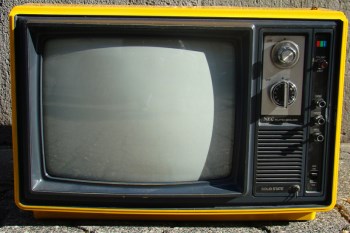Here’s one reason why Apple may not be producing a television with its name blazoned on it in the near term: it doesn’t look like people have, so far, shown that much interested in them yet. According to a new report out from consumer researchers GfK, connected TV televisions are faring much better in markets like China, Brazil and India compared to the U.S., UK and other developed markets — with China commanding the highest usage at 44% and the UK and U.S. leading more advanced markets with just 11% penetration.
GfK puts it down to consumers in the latter category stuck in an “analog” mindset — although consumers in the latter markets are also big users of other ways of getting the same experience without forking out for a pricey connected TV set.
On top of set-top boxes from pay-TV providers, there are consoles like the Xbox, Roku, and PlayStation that also provide on-demand and connected services to users through their TV sets. And devices like tablets and PCs, which are more suited to interactivity, are also proving to be among the fastest-growing devices for video viewing. And there is of course the increasing multiscreen trend, in which users use at least two devices at the same time to provide a simultaneous lean-back/lean-forward experience.
And there is also the issue of price. A smart TV can cost upwards of $200 or more than a more basic set, and that might not even give you a significantly better screen than a less expensive make.
The supremacy of China in the connected TV category comes on the heels of a report last week from NPD that noted that China — or those in urban centers at least — watch the most online video content, across the most devices, of any other regional group of consumers.
Users don’t care much about getting their Twitter fix right on the screen. GfK found that there seems to be little demand at the moment for the kinds of bells and whistles that a lot of connected TVs are offering. Only 28% of respondents thought interactivity made programs more interesting. Only 25% thought tweeting and other commenting formats make the experience more interesting.
“Our findings suggest that broadcasters need to integrate their social elements far more engagingly into the fabric of the programme, to encourage viewers to interact,” writes Richard Preedy, Research Director at GfK. This particular study took into account a total of 7,000 interviews from Belgium, Germany, Netherlands, Spain, UK, Russia, Turkey, Mexico, Brazil, USA, China, India and South Korea — 500 in each country except Belgium, where it collected 1,000,
On the other hand, services that helped users find more info on programs fared much better: 33% more viewers searched for information on the shows they are watching than use social networks to share the experience with friends, GfK writes.
Smart TVs go where PCs do not? It seems that smart TVs are faring much better in markets where PC penetration is lower: as they do with their mobiles, users in these markets as a result look to their TVs to fulfill some of the functions that might have otherwise been relegated to the PC: 75% of Chinese smart-TV owners used their TVs’ fancy interactive features in past month; in Western markets the average number was less than half, GfK said.
That also seems to translate into buying intention, too: among U.S. and UK consumers, less than one-third (29%; 26% respectively) said they would look for Internet-enabled TVs in the future. In China and India the numbers were respectively 64% and 61%.
Now also could be the time to strike while the iron is hot: just as Apple effectively created a whole new market for smartphones that were largely the terrain of very early adopters and business users before the iPhone, it could could do the same for televisions. GfK notes that sales of smart TVs in the six biggest European economies were up by 31% in the first half of this year.
It could be newer features that may get users in these markets more interested in smart TVs: 67% of respondents said they were interested in touch and gesture control; and 43% want to control their TVs with something other than a remote, such as a smartphone. Yes, these functions are already here and getting more popular all the time; the question is whether users will look to their TV sets or other gadgets to provide them longer term.

